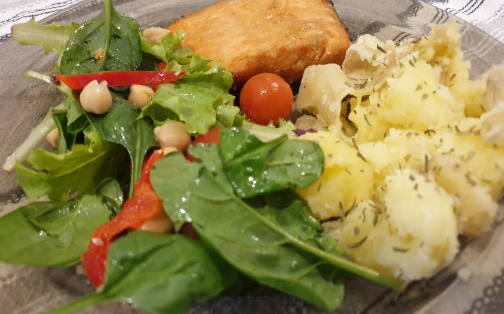Bringing Japanese ingredients into your everyday cooking
The introduction to this marvellous collection of recipes describes the book not as a Japanese cookbook, but a book that “introduces and utilizes Japanese ingredients in easily achievable, traditional and novel recipes for the home cook.” It is a “celebration of Japanese ingredients” which successfully sets out to demystify the cuisine and introduce it as everyday cooking.
The extensive introduction elaborates on this purpose and breaks down the seven core Japanese seasonings, such as soy sauce, mirin, miso, dashi, sake and rice vinegar. Further recipes are then collected in a six more chapters that focus on a specific set of ingredients: Dried, Fermented and Preserved Japanese Ingredients; Spices, Condiments and Garnishes; Rice, Noodles and Tofu; Fruit and Vegetables; Teas and Other Beverages; and Sauces, Marinades and Garnishes.
Beautifully presented on glossy paper, and accompanied by rich, colourful photography, each section has its own introduction that is several pages long, describing in depth those ingredients listed in the section heading. There’s a wealth of information to be found, written in a clear, easy to understand style.
The recipes by Le Cordon-Bleu chef, food & travel writer, Luiz Hara, are clearly laid out with their own introductory paragraph and accompanying full-page photograph by Simon Smith. Of all the cultural cuisines I enjoy regularly, Japanese is the most mystifying and the furthest from my comfort zone, making this book my most challenging recipe book to conquer so far. The two recipes I tried however, were both successful with the greatest difficulty being to find some of the lesser known ingredients, such as a satsuma, which I’ve only found as a jam so far.
Success encourages further discovery and if I can do it, anyone can. There are another 5 recipes on my immediate hit-list to try, ranging from a Brown Butter and Miso Linguine (page 58) to stir fries, rice dishes and an inexcusably delicious looking Yuzu Cream, Rhubarb (or Plum) and Pistachio Crumble (pg 216).
Miso and Satsuma Marinated Salmon (page 26)

Despite not being able to find a satsuma, I went ahead with this dish because I’d already defrosted some salmon steaks. It’s a citrus fruit, so I replaced it with the zest of an orange. A quick Google search would have told me that a satsuma is a type of mandarin, so I just have to live with that embarrassment now! This dish comes in two parts – a marinate for the grilled salmon, which should be done overnight, and an accompanying potato salad using tarragon as it’s main flavour. Both are delicious, although the salmon marinate was a little salty for my taste – something I can easily rectify next time. It’s a quick and healthy meal, taking only half an hour in the kitchen once the marinating is complete. I eat a lot of salmon so it was a pleasant surprise to discover a whole new flavour to enjoy.
Chicken Katsu Curry on Rice (page 120)

The not-so-secret herbs and spices in this deep friend chicken make for a popular dish, although the recipe easily feeds far more than the 6 people it suggests. The recipe is in three parts – the crumbed chicken, a vegetable curry, and rice. It’s quite a bit of time and effort, but such a satisfying result. Who doesn’t love fried chicken? And when mixed with the unique flavour of a Japanese curry, it’s a marvellous combination. I found the plain rice accompaniment to be completely unnecessary because the crumbed chicken pieces were enough of a substitute. I made this dish for a dinner party, and left overs were happily taken home by half the guests. This recipe is comfort food at its best.
Reviewed by Rod Lewis
Twitter: @StrtegicRetweet
Distributed by: Murdoch Books
Released: December 2018
RRP: $49.99 hardcover






















